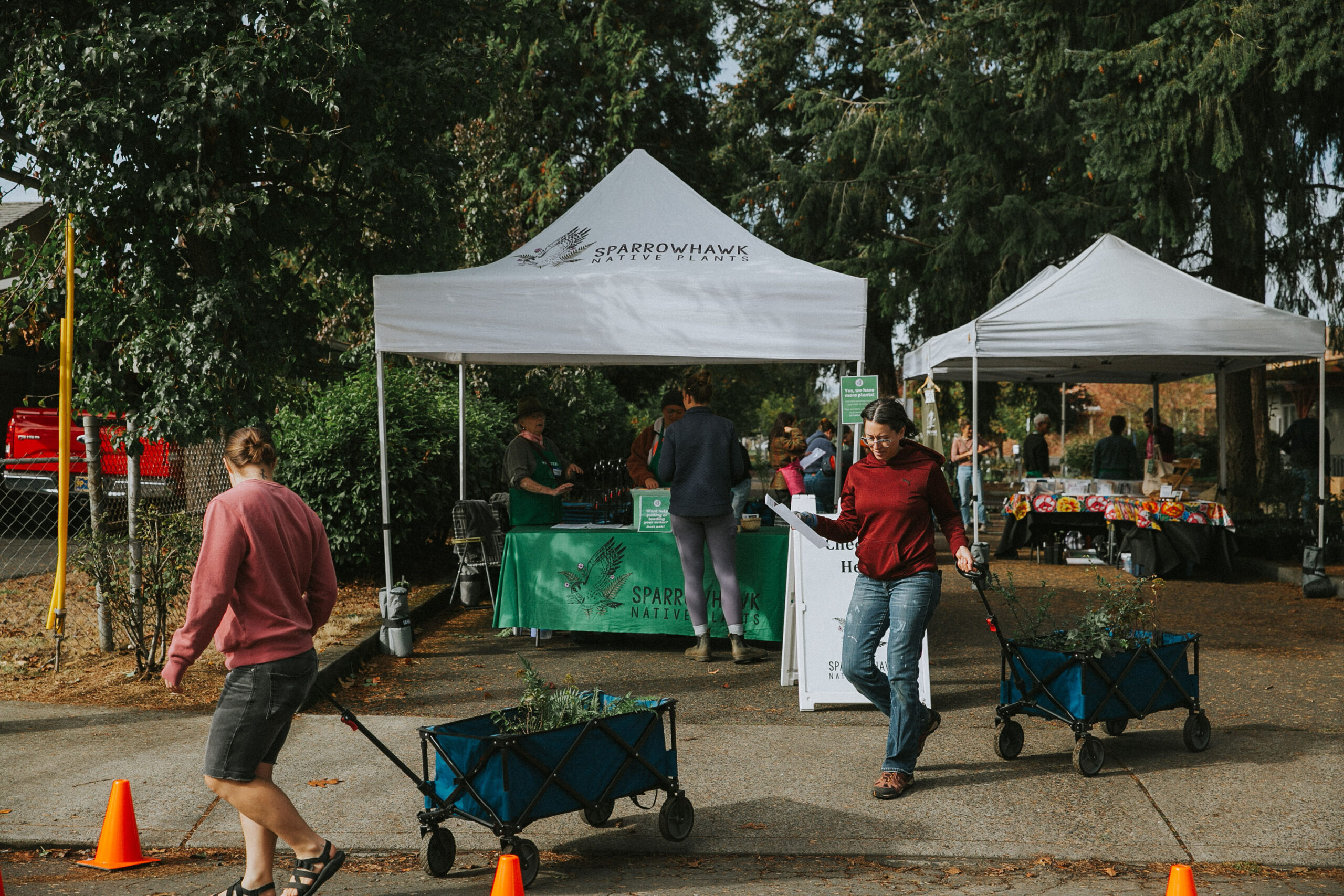A swiftly growing movement in Portland is taking over backyard plots — an appreciation and love for native plants and trees. This “habitat gardening” creates thriving ecosystems that support wildlife like pollinators, insects and birds, increases biodiversity and restores balance to our communities in the face of the climate crisis, even on the smallest scale.

Nikkie West and Tracy Cozine know the power of native plants, and have made it their business to ensure more Portland area residents have access to them for their own backyards. The two women met working for the regional Backyard Habitat Certification Program in 2015, when they noticed an interest among gardeners for a greater diversity of native plants, along with a place to buy them that was closer to home.
In 2019, the duo launched Sparrowhawk Native Plants, a pop-up plant nursery that offers online sales of premium-quality native plants, with neighborhood events each fall and spring. Customers can research plants on the website to find the best ones for their plot. And without the need for a brick-and-mortar location, Sparrowhawk is able to offer plants at a more affordable price.
But the value grows beyond building better backyards. Each pop-up is hosted in partnership with a different mission-aligned community organization. A local environmental group might offer a parking lot as a location, for example, or a crew of volunteers, and in return it receives a share of the proceeds. The result? Sparrowhawk has shared over $150,000 with local groups since its founding.
In this interview, we asked Sparrowhawk’s founders to tell us more about the value of native plants, how to design a beautiful backyard plot, and why both new and seasoned gardeners can benefit from native plants. This interview has been lightly edited for clarity.

All photos by Le Colibri Studio, LLC.






Let’s start with native plants. What are the benefits for animals and ecosystems?
Nikkie West: “Native plants and insects have evolved together over millions of years. About 90% of native insects are specialists, meaning they rely on specific native plants to eat and lay their eggs. Without those native plants, they cannot reproduce. As you move in that food web, insects are then food for amphibians, birds and mammals. It’s all related. Without native plants as the foundation of your ecosystem, you’re not going to have a plethora of insects.
“I once saw a graphic [image] that showed a yard with the typical foundation shrubs that were non-native. Then the next graphic was the same yard, but instead of those foundation shrubs, they were statues. I thought, that’s a good way to think of it: if you have a lot of non-native plants in your yard, they might as well be garden art.”
I can see that. Plants are decorations as seen through a conventional landscape lens.
Nikkie West: “They’re beautiful. I love them. I love all plants, but I love ecosystems more.”
Can you speak to the importance of genetic diversity in plants?
Nikkie West: “We all know that our world and our plant communities are facing an uncertain future. It’s going to be important that native plants have as diverse genetics as possible to face that future, because there are going to be a lot of plants and plant communities that don’t survive with the climate we have in store for us.
“Then there will be some plant communities that will have some strange genetic variation that’s going to enable them to thrive. So we’re kind of at the place where we need to throw everything at the wall to see what sticks, and plant as many local varieties as we can, but with as diverse genetics as we can to give them the best fighting chance.”









A typical complaint about native plant gardening is that it looks messy, wild or without form. Do you have any tips for gardeners who want a more clean-kept looking garden while still providing abundant habitat?
Tracy Cozine: “This is one of my favorite things — working with homeowners in changing their mindset as to how their yard works. If you think about birds, they like to live in these thicket-like environments. That’s the kind of habitat we’re hoping to achieve in people’s yards.
“A few things you can do to make your yard look aesthetically pleasing but have that habitat is to think about having sharp delineations between different parts of the yard. Think about a creative row of natural logs laid down as a border, or maybe some really cool rocks in certain formations or geometric patterns.
“A human looking at it will see there is intention with some of that ‘hardscaping.’ It allows one side of the delineation to be wild, like a thicket, and maybe the other side would be your eco-lawn. Sometimes just having that line of rocks or logs is all you need to give an area form.”
You’re like a sculptor or an artist in the natural world, with all the organic matter at your disposal.
Tracy Cozine: “Yes. If you think about having one plant in a garden, it will look floppy and unbalanced. But if you think about planting a whole swath of them along a fence line, visually, when you stand back and look at it, it will be a beautiful, tall border of flowers, for example. So we just change the perspective of how we look at adding these big, tall wild flowers in our yards.”
Nikkie West: “I love what you said, Tracy. Another trick that I like is, in most of my garden, I’ve moved away from traditional mulch products, because there’s still quite an embedded energy footprint in those traditional products. They come in a giant plastic sack, and you need to drive to the grocery store to buy them.
“For most of my yard, I just let things lie where they fall, or I do a lot of composting on site. I will spread it around and let sticks, leaves and other things be the mulch. I will buy a traditional mulch product infrequently and add a couple inches of it around the beds that are closest to high traffic areas, like the porch or sidewalk. A little mulch in a highly visible area pulls the whole thing together. I’m only putting it on 2% of my yard, and the other 98% is wild and leaves.
It’s about the balance you’re trying to achieve. What did you learn during your time with Backyard Habitat that has helped you build Sparrowhawk?
Tracy Cozine: “I met with homeowners that were on their journey to build naturescaping, and they would talk about their experience of going to a native nursery. If you browse in a nursery, you see a plant that looks the best on that day or month. You end up spending all your money on these cute little plants. Then only later, when you plant them, you realize they were not right for your soil, or you didn’t realize one would be eight feet tall and eight feet wide. You didn’t have the information you needed when you bought them.
“Our business model allows people time to research the plants on our website, see photos of what they will look like in three years and make choices ahead of time, so that they have their shopping list when they order.
“When they pick up their plants at one of our events, sometimes they’re surprised to find bare stems in a pot. But the fall might be the best time to plant that shrub or tree, when it’s dormant. Had they walked into a standard commercial nursery, they wouldn’t have bought it because it would have looked like sticks in a pot. But man, will they be excited the next year when that plant leaves out.”







How do gardeners figure out what to plant, where, and in what conditions?
Tracy Cozine: “One of the things that Nikki and I always say to our customers is, think about naturescaping as watching and listening to what nature wants to do in your yard. There might be some trial and error for the first few years. Try a bunch of different plants that you think will work, and then see what actually is thriving. Embrace those ones and bring in more of them. If a native plant you wanted just never makes it, it’s okay to say, ‘My little piece of the world may not be the right home for that plant, but I can provide a home for others instead.’
Nikkie West: “The first yard I naturescaped in Portland (I keep a very dorky spreadsheet of all the plants that I put in my yards), I was excited because I had close to 100 species of native plants. But, of course, they were just cramscaped into it. I was more interested in the number of species I could learn about because that was an era when I was doing the most learning. It was the beginning of my journey into this type of gardening.
“In my garden today, I have around 50 or 60 species. It’s fewer species, but I’m doing a much better job replicating them in different areas. If they thrive, I move them around to new areas. The result is much better.”
That makes sense. If you have a big swath of a particular flower or a big hedgerow of the same fruit, you’re more likely to attract the wildlife that’s in migration. And that’s really the goal, creating these safe zones for them to land and forage.
Nikkie West: “I don’t know if there’s research out there on how birds find your tiny little habitat patch, but it blows my mind, because when I first moved into this yard there was nothing there. I didn’t see birds. Then over the last 10 years, I see new species of birds as the habitat matures. And this is a tiny postage-stamp yard in North Portland!
“How do they know it’s here? Do they tell their friends? Are the same ones coming back year after year? Can they see it from the air as they fly over? I didn’t see warblers the first few years that I was putting in my habitat, but I see them now. I see hermit thrush and kinglets now, which I didn’t see at first either.”
It just starts with building good soil and attracting a diversity of insects.
Tracy Cozine: “Absolutely. A lot of people, when they think about feeding birds, they think about buying that bag of bird seed. Actually, a lot of a bird’s diet is protein. One of the best snacks for a bird is that little caterpillar, it’s like a granola bar for the day.
“If you can provide that habitat for insects, butterflies and moths, they’ll lay their eggs and turn into caterpillars, and then those birds that need the protein will come to your yard. That’s a beautiful thing.”
